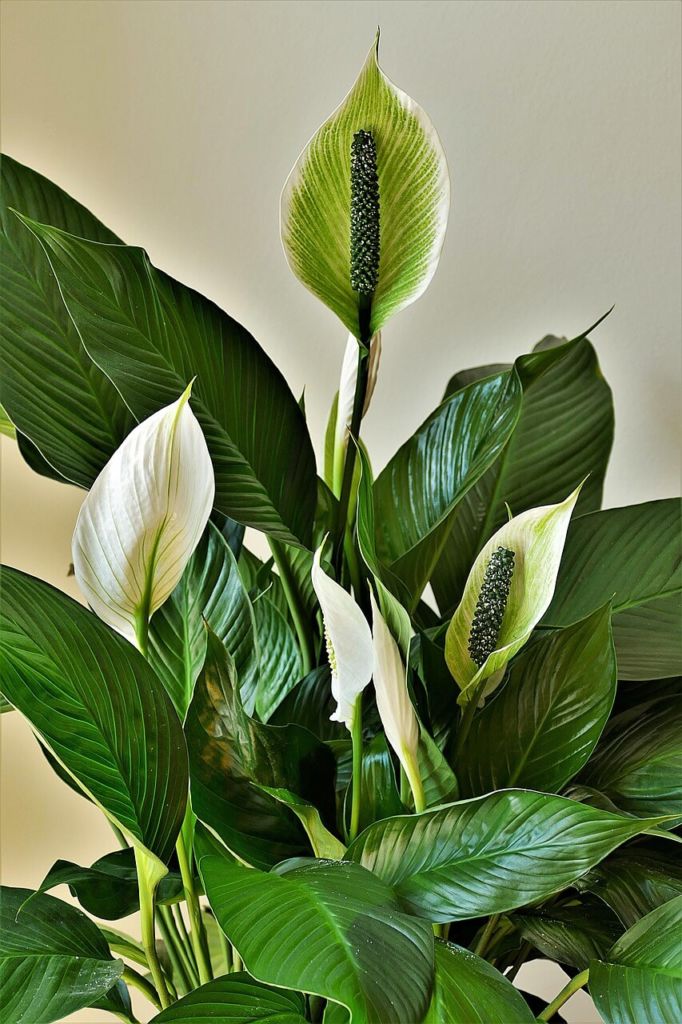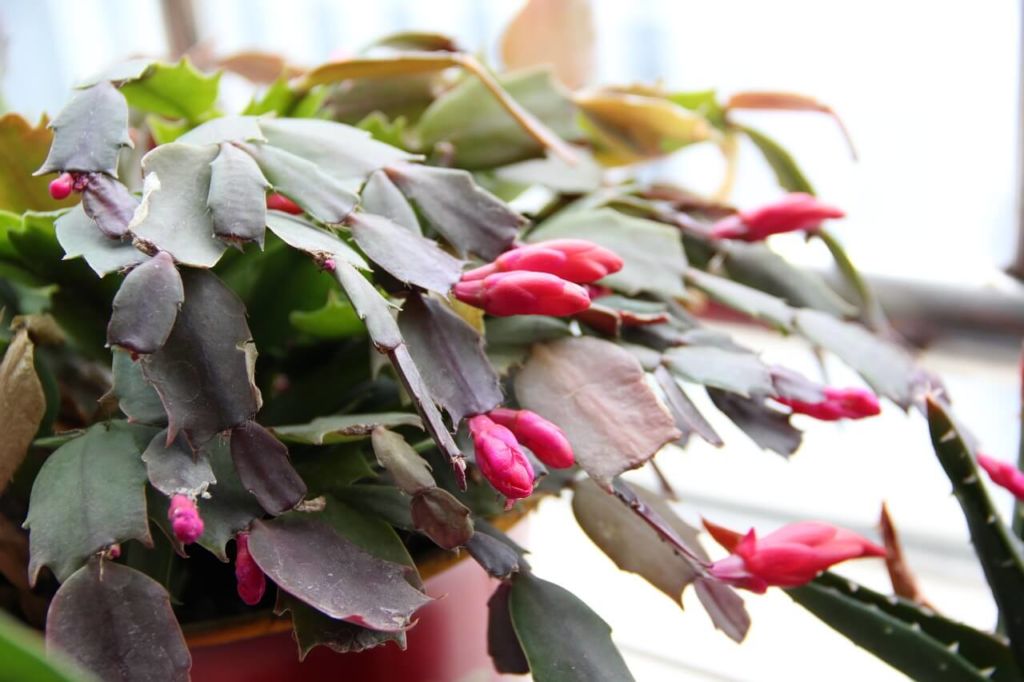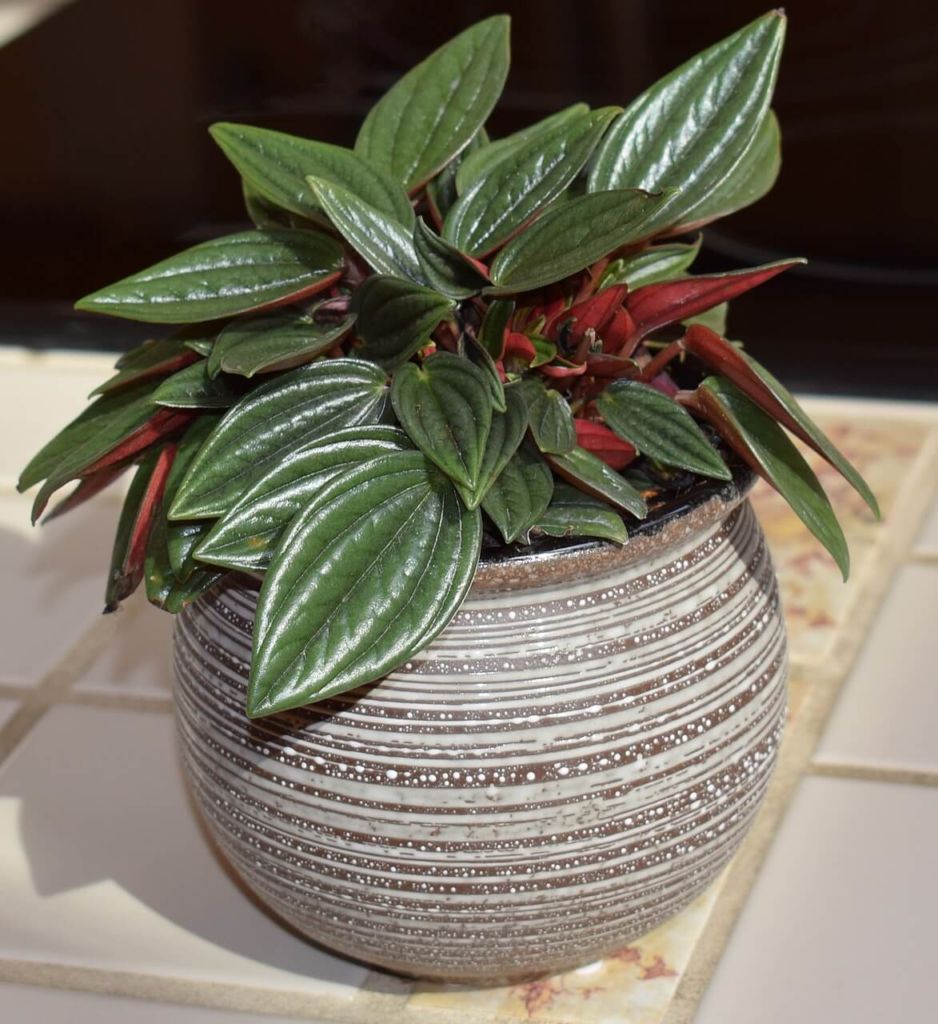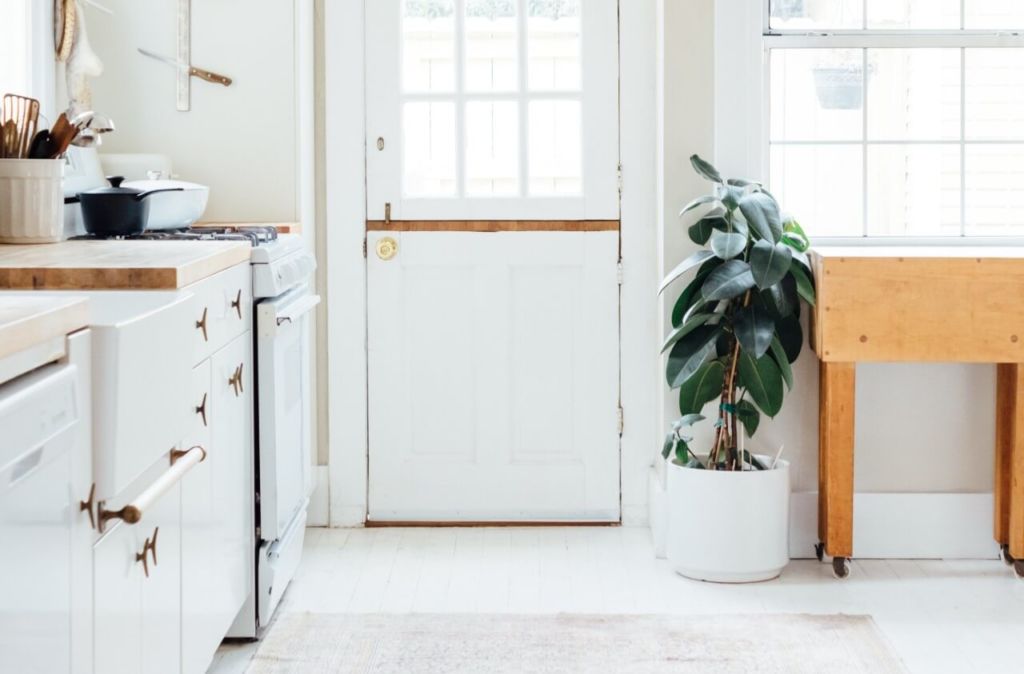Are you looking to spruce up your home or apartment with a few easy care houseplants? Indoor greenery is a simple, inexpensive way to add style, color and intrigue to any space.
Indoor houseplants can fit effortlessly into corners of rooms and come in a variety of sizes to suit your empty space needs. Place plants on shelves or windowsills, hang them from the ceiling, or invest in stylish containers and planters — the design possibilities are endless. Plus, plants provide a variety of health benefits, including allergy relief, mood elevation, air purification and stress relief.
Some require more work than others, but luckily there are plenty of low-maintenance indoor plants that can take your space to the next level — no green thumb required.
The Best Low Light Plants
1. Cast-iron plant
A cast-iron pan is durable and everlasting, which is the thought behind this plant’s name. Also known as bar room or ballroom plants, this option features leaves that are 4 inches wide and about 2 feet long. A cast-iron plant will grow in minimal light, which is perfect for those spaces in your home that hardly ever see the sun (but be careful of direct sunlight, which can burn the leaves). This plant also adapts well to most temperatures and humidity levels. Allow the soil to dry out between watering.
2. Monstera
There are many varieties of monstera plants, but the Monstera deliciosa and Monstera adansonii are two common options. Various species are also known as the “Swiss cheese plant” due to holes that can develop in the leaves. This type of plant is a good choice for all indirect light conditions and practically any room in your home. Not only is this plant easy to maintain, but it also features air purifying qualities. Just make sure to water it enough to keep the soil from drying out. Yellow leaves can indicate that your plant is thirsty!
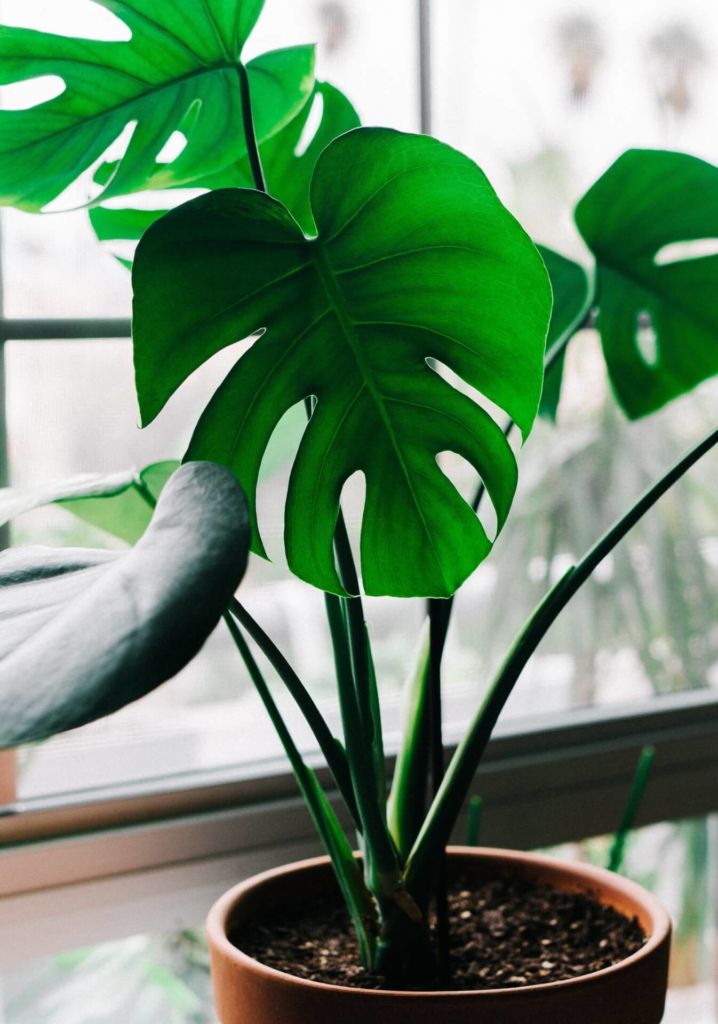
3. ZZ plant
This plant features a fun name that’s based off its Latin name Zamioculcas zamiifolia. It thrives in low-to-bright indirect light and only needs to be watered when it’s completely dry. It’s also really good for the air. A NASA study found that it works well at removing large amounts of toxins. Just be careful because ZZ plant are poisonous, so remember to keep the plant away from pets and children and wash your hands after touching the plant.
4. Peace lily
If you’re looking for low-maintenance greenery that occasionally blooms, a peace lily is the plant for you. Contrary to its name, the plant is technically not a flower but a modified leaf, similar to a poinsettia. It does, however, feature white blooms in the spring and sometimes in the fall if it’s properly maintained.
Peace lilies don’t require a lot of light and can thrive in shade or partial shade — and can even handle fluorescent light. In the summer, peace lilies require a weekly watering. Even though they thrive in indoor conditions, they don’t enjoy drafts or drastic changes in temperature, so it’s best to keep these plants away from doors. Also, keep in mind that peace lilies are mildly toxic to both animals and humans.
The Best Medium Light Plants
5. Snake plant
This plant is a tough one — literally. Snake plants, also known as mother-in-law’s tongue or ribbon plant, are resilient because they can thrive in low, medium or high light conditions and don’t require a lot of H2O. In fact, you should make sure the soil is completely dry before watering. They also come in a variety of shapes, sizes and colors and can thrive in dry, stale or humid conditions.
6. Chinese evergreen
If you’re looking for a good first plant, consider a Chinese evergreen, which features rich green leaves patterned with silver and blooms in spots where it receives sufficient light. When the plants are small, you can easily fit them on your desk or tabletop; more mature plants are perfect on the floor in corners or as an accent piece in a room.
Chinese evergreens require low to medium light (or indirect sunlight) and moderate watering and prefer temperatures around 70°F (although they can tolerate as low as 50°F).
7. African violet
These plants require a bit more TLC than some other low-maintenance options, but they’re a good choice if you’re looking for a compact selection with a splash of color (varieties include purple, pink, blue, lavender-pink, white, red and more!) It’s important to keep the soil moist, but be careful of overwatering. Also, make sure water doesn’t come in contact with the leaves, which will result in brown or yellow spots. It’s best to position this plant in a spot with bright, indirect light.
8. Christmas cactus
Embrace a fun and festive spirit around the holidays with this easy care houseplant, which gets its name from its tendency to bloom in December. This plant has flat leaves with rounded “teeth” around the edges.
Christmas cacti can handle low light but will produce more flowers with brighter conditions. Fun fact: You can also “encourage” your plant to bloom in December by keeping it in total darkness for 12 hours a day beginning in mid-October. Another option is to keep the cactus in an environment with cool temperatures around 50-55°F starting in November. Unlike other cacti, this plant prefers more humid, moist conditions, so regular watering is necessary. The flowers come in range of colors, including red, white, yellow, pink and purple.
9. English ivy
You’ve probably seen this plant on an outdoor trellis or the side of a building, but have you considered an indoor English ivy plant? This greenery thrives in containers, hanging baskets, or anywhere its long vines can dangle or spread. Indoors, medium to bright indirect light is ideal, and it’s best to water thoroughly and infrequently.
10. Peperomia plant
If you’re looking for a relatively forgiving plant, the peperomia is for you. This plant comes in a variety of colors, needs medium to bright light, and requires little water (it’s better to keep the soil dry rather than wet). Since this is a tropical plant, warmer and more humid conditions are best, which means you can transport your plant outside for the summer if the weather cooperates.
The Best Full Light Plants
11. Spider plant
Don’t worry — this plant has nothing to do with creepy crawly insects. It’s named for its shape, which can hang over the side of the container, and the plantlets (or offshoots) that resemble tiny spiders dangling from threads.
The spider plant grows well in containers or in hanging baskets and enjoys bright to moderate indirect sunlight. (Direct sunlight can brown the leaves, so be careful!) Also known as airplane plant, ribbon plant and spider ivy, this greenery can also help reduce indoor air pollutants. You want to water spider plants regularly during the summer but cut back during winter — and watch the tap water since spider plants don’t respond well to fluoride.
Need a gift for a friend? They’re also easy to propagate, which means you can pot one of the rooted plantlets or repot a large, mature plant.
12. Aloe
This succulent is widely known for its plump, spiky leaves that provide a moisturizing gel for minor cut and burns. In addition to its medical properties, these hearty plants thrive best in terra cotta pots and depending on your home’s humidity can go a few weeks without water. They also prefer bright but indirect light.
13. Pothos
One of the easiest indoor plants to take care of? The pothos plant, which is known for a trailing vine of variegated heart-shaped leaves that can grow to 6-10 feet (and sometimes as long as 30 feet if you don’t prune!). Pothos, which is a member of the philodendron family, is known by a host of other names: golden pothos, silver vine, taro vine, devil’s vine and devil’s ivy.
When it comes to light, bright but indirect is best. Pothos plants like dry soil between watering and an indoor temperature range of 65°F to 75°F. Regular pruning is important since the vines can become long and twisted, and you’ll likely have to repot your plant once it outgrows the container.
14. Jade plant
The thick, glossy, oval-shaped leaves make the jade plant an attractive option if you’re looking to enhance your décor with a houseplant. They need a lot of sun, so make sure to put your jade plant in whichever room gets the most light. While they are easy to maintain, make sure to let the topsoil dry out before watering.
This plant is sometimes called the money plant or dollar plant, and historically were often given as housewarming gifts because they were thought to bring good luck.
15. Prayer plant
Need a bright splash of color for your room? The prayer plant features deep green leaves with yellow patches along the middle of the midrib and red veins. The leaves stay flat during the day but fold up at night similar to praying hands, hence the plant’s common name. Since the prayer plant is more compact, it’s also a good option for your windowsill.
Bright, indirect light with higher humidity conditions is best, although a prayer plant can handle lower light spaces, too. You should keep the soil moist but drier during the winter months. Since this type of plant favors humidity, you could keep it near other plants or a bowl of water during drier conditions.
16. Rubber plant
Rubber plants have big possibilities — literally. You can restrict their growth by keeping them in smaller pots, or you let them grow to become indoor trees (domesticated plants range from 6 to 10 feet tall in most homes). Since bright, indirect light is ideal, you can position your plants in sunny spots that are protected by curtains. The plant’s water needs are seasonal; the soil should be moist in the summer but only watered a few times a month in the winter. Also, the plant’s sap can cause skin irritation, so make sure to wash your hands.
17. Air plant
A plant without soil? It’s true. This is a fun and stylish houseplant that may even serve as a conversation starter depending on how it’s displayed in your home. The air plant has a few short roots that help the plant hold onto a particular surface. Submerge them water for a few hours every 10 days, and then turn them upside down on a towel to dry. Air plants enjoy bright, indirect sun and because no soil is not required, you can display them in a variety of fun ways, such as in a hanging mobile or terrarium.
18. Yucca plant
This yucca plant may not seem like a typical houseplant, but there are a few species that work well indoors since the plant is slow-growing, drought tolerant and doesn’t require much water. They flourish in brightly lit spaces, although they also do well in indirect sun, and some pruning is probably required. You can easily overwater the yucca plant, so just make sure yours has good drainage and dries in between watering. Also, be mindful that yucca plants are toxic to dogs, cats and horses.
Whether you’re looking for something with low, medium or full light options, there are plenty of low-maintenance indoor plant options for everyone.
